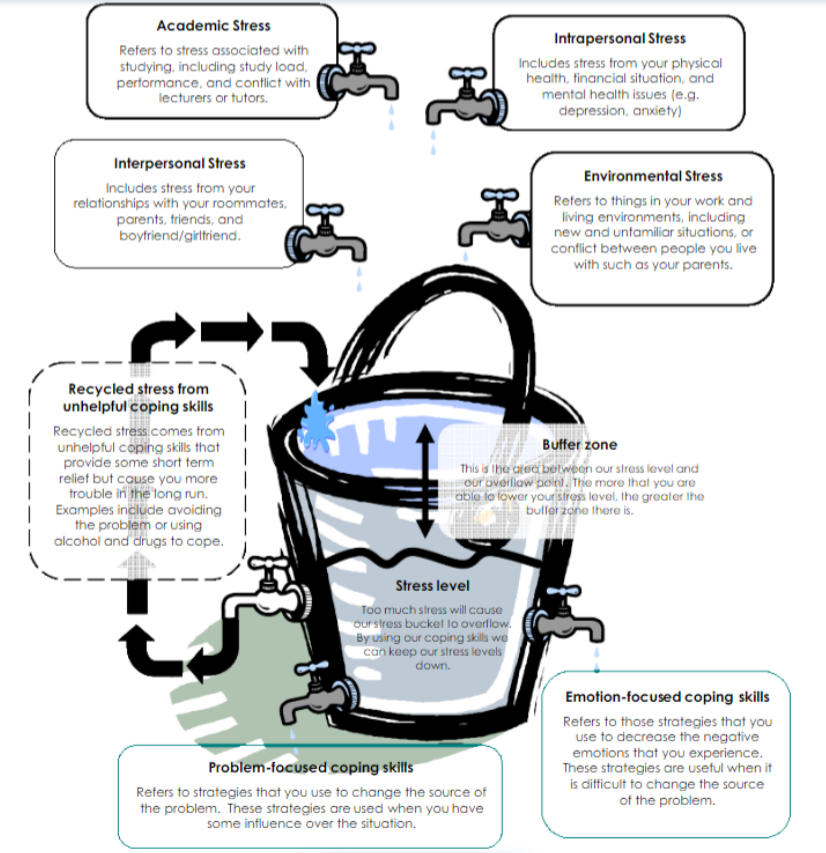
What Is Resilience...and Why Is It Important?
Include this article in your Skills Builder Journal. It could help you develop... 

When life gives you lemons, you make lemonade. But what happens if the lemons you get given are sour? What happens when things in your life don’t quite go how you thought you would? That’s where being resilient comes into play. You’ve got to learn how to take what you get, and make it work for you...
So what exactly is resilience?
Resilience is not just your ability to bounce back, but also your capacity to adapt in the face of challenging circumstances, whilst maintaining a stable mental wellbeing. Resilience isn't a personality trait – it's something that we can all take steps to achieve.
NCS Grad and fashion designer Chamiah Dewey, Chamiah Dewey Fashion (CDF), explains resilience well, “when I think of how I got to where I am now, I always come back to my resilience. I grew up without a lot of money. My family were on benefits, living in social housing, and we didn’t have the luxuries that lots of my peers had. Other people might have a helping hand from friends or family, but I didn’t have that. So, I’ve had to work hard and find a way through the hurdles I faced.” Read more about Chamiah's journey and work here.
Resilience isn’t something we’re born with. It’s something we have to learn and keep working on to grow.

Why is it important to look after?
Think about something that has really got to you over the past few weeks, something you have struggled to get past right away. It could be an argument or disagreement with a friend, it could be that last task on top of a mountain of tasks, or maybe you missed your bus and you were super late for something important.
Now think of yourself (and those feelings) as a bottle of fizzy drink. As you think about this event, you might feel your emotions start to build - making your imaginary bottle shake. Even though our friends or family might not be able to notice from the outside, inside the pressure is building.
Imagine every time an event like this happens the bottle is shaken again and inside the bottle, the pressure continues to build.
If we were to remove the lid in one go, we all know what would happen - fizzy drink everywhere. The same is true for us. If we let things build and build, eventually they will overwhelm us - we will snap.
That’s why we need to take steps and use techniques to help ease the pressure. Like opening the bottle bit by bit, using techniques that work for you will help relieve that pressure and build your resilience.
Steps to build resilience
There are lots of different ways to build your resilience, and while everything won’t work for everyone, it’s always good to give these steps a go!
Take care of your body: nourish your body and mind through nutritious foods, water and activities like physical exercise and self-care.
Living to learn: learn from mistakes and always seek to learn new skills and knowledge.
Engaging in random acts of kindness: find ways to be kind to others and yourself through activities like mindfulness, or volunteering and social action.
Bringing humour into your life: seek laughter and playfulness as ways to de-stress.
Learning to accept: reflect on things that have happened - this could be your own mistakes, your current situation, things that you aren’t able to change.
Making your own reality: this means brainstorming to work towards positive changes in your life by finding goals or things that make you happy and prioritising that happiness.
Dismissing self-destructive thinking: challenge yourself when you notice it happening and reflect on positives about yourself.
What tools can I use?

Building resilience can take time, but there are a few useful tools that can help you get there!
The Stress Bucket
A ‘stress bucket’ is a good place to start in recognising what we already do to build our resilience and to understand where we need to do more. Similar to the plastic bottle, the stress bucket is a container for stress, but with some key taps – taps that release the pressure in a healthy way, and taps that recycle it back into the bucket over time.
Use the diagram below to think about (or draw out) what some of your stressors are, and think about the good steps and techniques you use (i.e. exercise or mindfulness) and the bad ones (i.e. isolation from friends).
Which of the steps from above can you adopt into your life to increase your good coping mechanisms and reduce the bad?

Practice Gratitude
Gratitude is one of the easiest and most effective ways of building resilience. Why? Because it encourages positive emotions which makes us more open, creative and ready to take on challenges.
End each day by writing down two to five things that you are grateful for. At first you will probably find this challenging but within a few days you will notice your mindset change, you will start to take note of the positive things that happen everyday. Try this for a week or two and see how it makes you feel.
Find The Silver Lining
Try looking for the positives in negative experiences. Think about the things that make your imaginary bottle shake. What positives can you take away from that? Perhaps an argument with a friend actually highlighted how you can better support each other in future. Or maybe it helped you learn something about yourself, or them, that you wish to change. Every cloud has a silver lining...you’ve just got to look for it!
So remember, challenges are a part of life, you just have to try and find the positives. Choose where to direct your attention and be aware of the things you change, and accept what you can’t. And don’t forget to take responsibility. Always ask yourself ‘is what I’m doing helpful, or is it harming me?’




